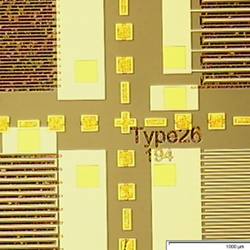
The use of artificial intelligence (AI) to process medical sensor data is enabling earlier detection and more effective therapies for cancer, the mitigation of epileptic seizures with implants, and the hope of using similar implants for Parkinson's disease and other neurological maladies, as well as lowering the costs of hospitalization overall.
Pierce Owen, principal analyst for end markets at market research firm ABI Research (Oyster Bay, NY), predicts combining patient sensors with AI-based predictive analytics will grow from 53,000 applications in 2017 to over three million by 2021, resulting in potential savings of over $52 billion in hospital costs that year. "Medical AI is moving beyond diagnostics and early detection to Deep 6's ability to find the perfect patients for clinical trials in minutes rather than months, and BERG Health's, Neuromation's and Exscientia's deep learning algorithms that run on massive streams of sensor data to cut drug discovery time down to three weeks from eight, and clinical trials down to 250 from 2000," said Owen.
Owen said AI processing of patient sensor data already offers cost-savings for today's average medical surgical stay of nearly $1,500 per day, as well as savings in intensive care unit stay costs of over $2,500 per day, and a reduction in the cost per bedsore (estimated at as much as $43,000) by over $15,000. He said AI processing of sensor data already is cutting the length of hospital stays by 9%, the number of in-hospital patient falls by 43%, the frequency of bedsores by 64%, and the frequency of "code blue" medical emergencies in hospital by 87%.
How it works
The most advanced platforms use graphics processing units (GPUs) to accelerate their deep learning algorithms.
Nvidia, for instance, markets a special medical imaging server tuned to process sensor data from traditional medical sources, such as x-rays, computed tomography (CT), and magnetic resonance imaging (MRI). Nvidia works with healthcare solution providers GE Health and Nuance to provide end-to-end solutions for hospitals, medical researchers, and pharmaceutical companies.
IBM likewise offers its AC922 Power System server (used to build the world's fastest supercomputer, Summit) in a configuration specifically configured for the same types of medical sensor data as Nvidia's server, but enabling it to spot cancerous tumors, skin cancers, indications of Parkinson's disease, and bone-growth abnormalities five times faster than with x86 processors. Co-developed by IBM and Nvidia to utilize on-chip NVLinks between a graphics processing unit (GPU) and IBM's processors, the AC922 "runs much larger data sets, which is very relevant to sensor data from medical images which are huge," says Sumit Gupta, IBM Systems vice president of AI and high-performance computing.
IBM Watson Health's Moonshot program, which was used in a study at the University of North Carolina, aimed AI learning algorithms at the medical records of 1,000 cancer patients; within a few seconds, the algorithms identified as relevant 300 cancer therapies that a team of doctors failed to identify.
Singapore's Ram Group recently announced "quantum sensors" made from gallium nitride and "a set of proprietary materials" rather than silicon, resulting in "a sensor over one million times more sensitive in signal-to-noise ratio than anything currently in the market," for use in telehealth and other wearable devices. For example, the company's non-invasive Home Health sensors providing readings of a patient's continuous blood pressure, heart rhythm/rate, atrial and ventricular pressures, and temperature.
Ralph Schermuly at the University Hospital in Giessen, Germany, who served as a beta tester for Ram's sensors, says they "represent a very promising non-invasive tool for cardiac diagnostics and monitoring, point-of-care telemedicine applications, and for revolutionary wrist-watch-based monitoring devices."
Neurologist Anthony Ritaccio, an Albany, NY-based expert in the treatment of epilepsy and the AI decodification of brain signals, records electrical signals from electrodes surgically implanted in a patient's brain; he uses AI to interpret the resulting data in order to anticipate seizures before they become serious. Director of the International Workshop on Advances in Electrocorticography, Ritaccio says epilepsy treatments used to involve medicines and, in many cases, surgical removal or laser ablation of affected brain areas. Today, he is using the first U.S. Food and Drug Administraion (FDA)-approved permanently implanted sensor and stimulation unit, made by Mountain View, CA-based NeuroPace. The implant samples the patterns of seizures and uploads the data to the cloud, where deep learning algorithms can detect early signs of oncoming seizures. Once detection is perfected and downloaded into the pacemaker-like external processor, it monitors the implanted electrodes to identify the onset of seizures in milliseconds, immediately providing patient-tuned neuromodulation as needed to interrupt or even prevent a seizure from occurring.
"The sensor/stimulator I implant electrically detects and treats seizures using very complex AI algorithms," said Ritaccio. "We tune the neurostimulation for each patient using parameters like length of stimulation, frequency, amperage, pulse width, and so forth. So far, we are attaining 70% to 90% seizure-reduction rates."
Martha Morrell, clinical professor of neurology at Stanford University and chief medical officer at NeuroPace, says the company combines massive streaming of patient data with AI to customize its neural sensor/stimulator for each patient. "Today we use deep learning algorithms that train on sensor data from our nine years of clinical trials. That enables us to leverage deep learning to identify similar brain activity across data sets for individual patients, allowing us to more quickly optimize and personalize therapy settings to new patients."
Morrell says the company plans "to continue to develop additional analytic capabilities, enhance their ease-of-use, and explore other applications of the unique chronic neurological data recorded by our devices."
R. Colin Johnson is a Kyoto Prize Fellow who has worked as a technology journalist for two decades.



Join the Discussion (0)
Become a Member or Sign In to Post a Comment